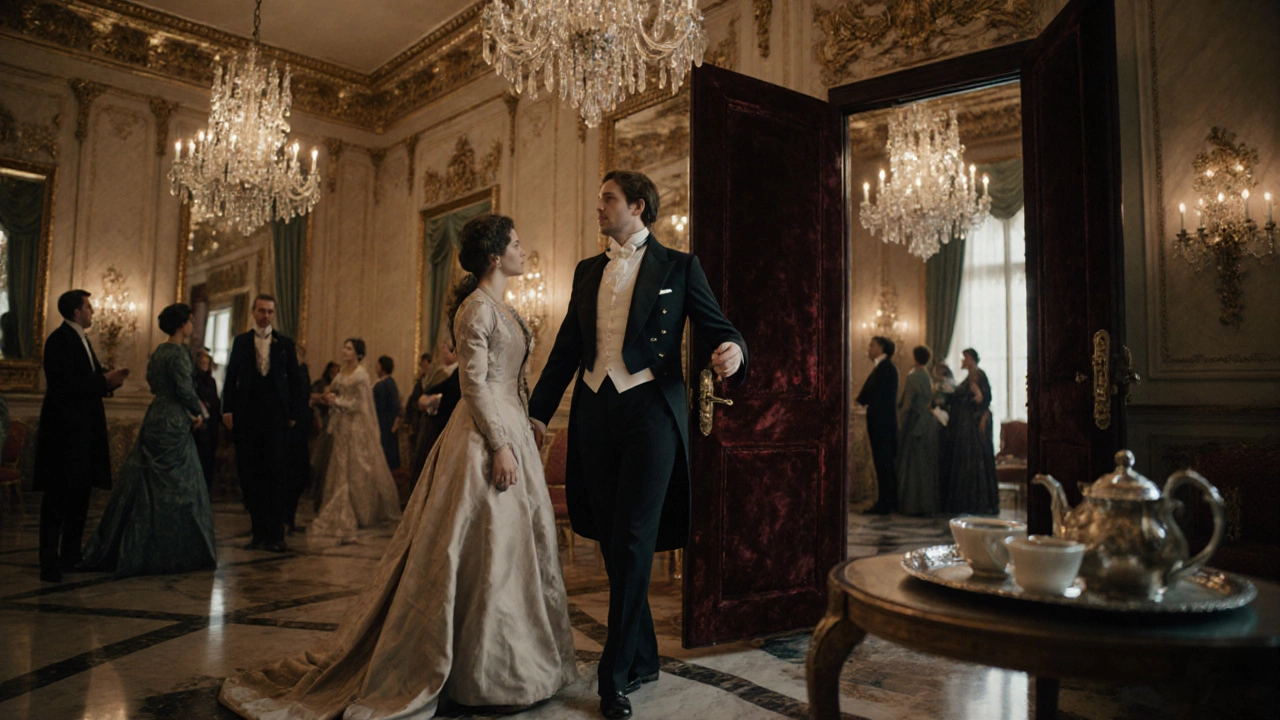When you hear the word gentleman, you probably picture a well‑dressed man who opens doors and says "please" and "thank you". But where did that image come from, and does it still matter today? This article unpacks the word’s roots, its shift through history, and how you can live up to its core ideas without sounding old‑fashioned.
Quick Takeaways
- Originally a legal term for a man of certain social rank.
- Chivalry and etiquette shaped the classic image in the 19th century.
- Modern "gentleman" focuses on respect, integrity, and emotional intelligence.
- Key behaviors: listening, humility, accountability, and care for others.
- Common pitfalls: confusing style with substance, or using the label as a status claim.
Below we walk through each of those points, give real‑world examples, and end with a quick FAQ.
From legal status to social ideal
Gentleman is a man who historically held a certain rank in English common law and later came to symbolize refined conduct. In medieval England, the term simply meant "a man of good birth"-someone who could afford a horse and armor. The word didn’t imply manners, just a place in the social hierarchy.
As societies moved from feudalism to urban centers, the elite class needed a way to signal not just wealth but also how they treated others. That signal became a set of expectations that we now associate with the modern gentleman.
Chivalry: the early code of conduct
Chivalry is a medieval code of behavior for knights, emphasizing bravery, honor, and protection of the weak. Knights were expected to defend the helpless, keep their word, and behave with courtly grace. While chivalry was rooted in warfare, its moral aspects filtered down to the upper classes as they left the battlefield and entered courts and salons.
By the Renaissance, the idea of a "gentleman‑knight" merged martial virtue with emerging ideas about personal refinement. The courtly love poems of troubadours praised courteous speech and refined taste-early signs that being a gentleman meant more than just bearing a sword.
Etiquette emerges as a social lubricant
Etiquette is a set of socially accepted rules governing polite behavior in public and private settings. In the 17th and 18th centuries, etiquette manuals flooded the market. Authors like Lord Chesterfield taught aspiring gentlemen how to address a lady, how to conduct a dinner, and even how to write a proper thank‑you note.
These guides turned manners into a measurable skill. A gentleman who could navigate a ballroom without offending anyone proved his worth beyond his coat of arms.

Honor and respect: the moral backbone
Honor is the quality of being worthy of respect or esteem, often tied to personal integrity. In the Victorian era, honor meant keeping one’s word, paying debts, and defending a family’s reputation at all costs.
Respect is the acknowledgement of another’s inherent value, often expressed through considerate actions. Victorian gentlemen were taught to treat servants and strangers alike with a certain deference-though the practice often stopped short of true equality.
Both concepts formed the moral skeleton that held the outward polish together. Without them, style became window dressing.
Social class: the original filter
Social class is a division of society based on economic, cultural, and educational factors. For centuries, only men from the upper or newly wealthy middle classes could claim the title of "gentleman". The label acted as a gatekeeper, reinforcing power structures.
In the 20th century, the rise of meritocracy and mass education chipped away at that barrier. Today, anyone who embodies the core traits can be called a gentleman regardless of background.
Courtesy: the everyday practice
Courtesy is the show of politeness in behavior, speech, and gestures. Small gestures-holding a door, offering a seat, listening without interrupting-are the modern equivalents of a knight’s oath to protect the weak.
Research from the University of Cambridge (2023) shows that people who receive courteous treatment are 22% more likely to cooperate in group tasks. That statistic underlines why courtesy remains a powerful social tool.
How the definition shifted in the 20th and 21st centuries
During the early 1900s, the "gentleman" image softened. Hollywood stars like Cary Grant projected an elegant but approachable vibe-silk suits paired with witty banter and genuine listening.
Fast‑forward to the 2020s, and the term has been re‑examined through lenses of gender equity and emotional health. Modern masculinity scholars define a gentleman as someone who actively practices empathy, stands up against sexism, and takes responsibility for his emotions.
Key modern traits include:
- Emotional intelligence: recognizing and naming one’s feelings.
- Accountability: owning up to mistakes without blaming others.
- Inclusivity: treating all genders, races, and orientations with equal respect.
- Self‑care: maintaining physical and mental health, which enables caring for others.

Practical guide: living the gentleman ideal today
Want to be seen as a gentleman in 2025? Try these concrete steps:
- Listen first. Before offering advice, repeat back what the other person said to confirm you understood.
- Dress for context. A crisp shirt works at a coffee shop, but a tailored suit is better for a formal interview.
- Mind your language. Avoid slang that could alienate older or professional audiences.
- Show punctuality. Arriving five minutes early signals respect for others’ time.
- Offer help without expectation. Pay for a coffee for the person behind you in line if you can.
- Speak up against unfair jokes or comments. Silence can be interpreted as agreement.
- Practice humility. Admit when you don’t know something and be willing to learn.
Notice how each tip aligns with the historic pillars-courtesy, respect, honor-while also adding a modern spin on emotional intelligence and inclusivity.
Common misconceptions
Many think being a gentleman is about clothing alone. While a neat appearance helps, it’s the inner habits that matter most. Others equate the term with aristocracy; in truth, it’s a behavior set that anyone can adopt.
Another myth is that gentlemen never show vulnerability. On the contrary, acknowledging fear or uncertainty demonstrates confidence, not weakness.
Side‑by‑side look: then vs. now
| Aspect | Historical (18th‑19th c.) | Modern (21st c.) |
|---|---|---|
| Social base | Upper‑class birth or wealth | Any background, focus on behavior |
| Core traits | Chivalry, etiquette, honor | Respect, empathy, accountability |
| Typical actions | Opening doors, formal dress, patronizing language | Active listening, inclusive language, emotional honesty |
| Public perception | Elite, sometimes aloof | Approachable, supportive, progressive |
Wrapping it up
So, what does "gentleman" stand for? It’s a blend of historic honor, courtesy, and modern empathy. The word survived because it adapts-shifting from a rank‑based label to a set of values anyone can practice. By focusing on respect, accountability, and genuine care, you not only meet the classic definition but also bring it into the present day.
Is "gentleman" a gender‑specific term?
Traditionally it referred to men, but the underlying values-respect, integrity, empathy-are gender‑neutral. Many women and non‑binary folks adopt the same principles today.
Do I need a fancy wardrobe to be a gentleman?
Clothing helps make a good first impression, but it’s secondary to behavior. A clean, appropriate outfit paired with courteous actions is enough.
How can I improve my gentlemanly conduct?
Start with small habits: listen without interrupting, be punctual, and apologize sincerely when you’re wrong. Over time, these become second nature.
Is chivalry outdated?
Some chivalrous gestures feel old‑fashioned, but the core idea-protecting and respecting others-remains relevant. Update the actions to fit modern sensibilities.
Can a teenager be a gentleman?
Absolutely. Age isn’t a barrier; it’s about adopting the right mindset and practicing the habits daily.






